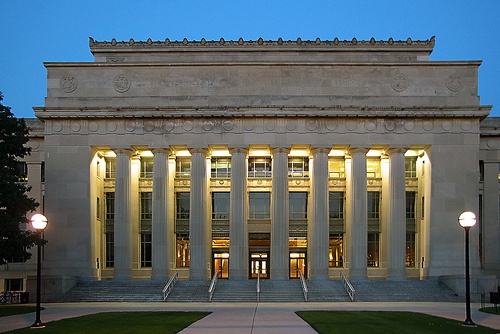Angell Hall is one of the most prominent buildings on the University of Michigan’s central campus in Ann Arbor and was named after James Burrill Angell, who served as the university’s president from 1871 to 1909. The building was designed by the architect Albert Kahn and completed in 1924, and is an example of the Collegiate Gothic style, which is characterized by its use of pointed arches, decorative stone carvings, and other medieval-inspired elements.
The exterior of Angell Hall is made of Indiana limestone and features a grand entrance with a large, arched doorway and two towers. Inside, the building contains classrooms, offices, and other facilities for the College of Literature, Science, and the Arts. It also houses the University of Michigan’s English Department and the Department of Philosophy.

Over the years, Angell Hall has undergone several renovations and expansions, including the addition of a large auditorium in the 1950s and a modern addition in the 1990s. Today, it is a central part of the University of Michigan’s campus and is a popular destination for students and visitors alike.
Throughout its history, Angell Hall has played a significant role in the university’s academic and cultural life. It has been the site of numerous lectures, seminars, and other events, and has been a hub of intellectual activity for students and faculty. It is an iconic and historic building that continues to be a vital part of the University of Michigan community and a symbol of the university’s commitment to education and intellectual inquiry.
In summary, Angell Hall is a beautiful and historic building that has played a vital role in the University of Michigan’s history and will continue to do so for years to come. Its Collegiate Gothic style and prominent location on campus make it a standout feature of the university, and its role as a center of academic and cultural activity makes it an important part of the University of Michigan community.



Leave a Reply
Be the First to Comment!